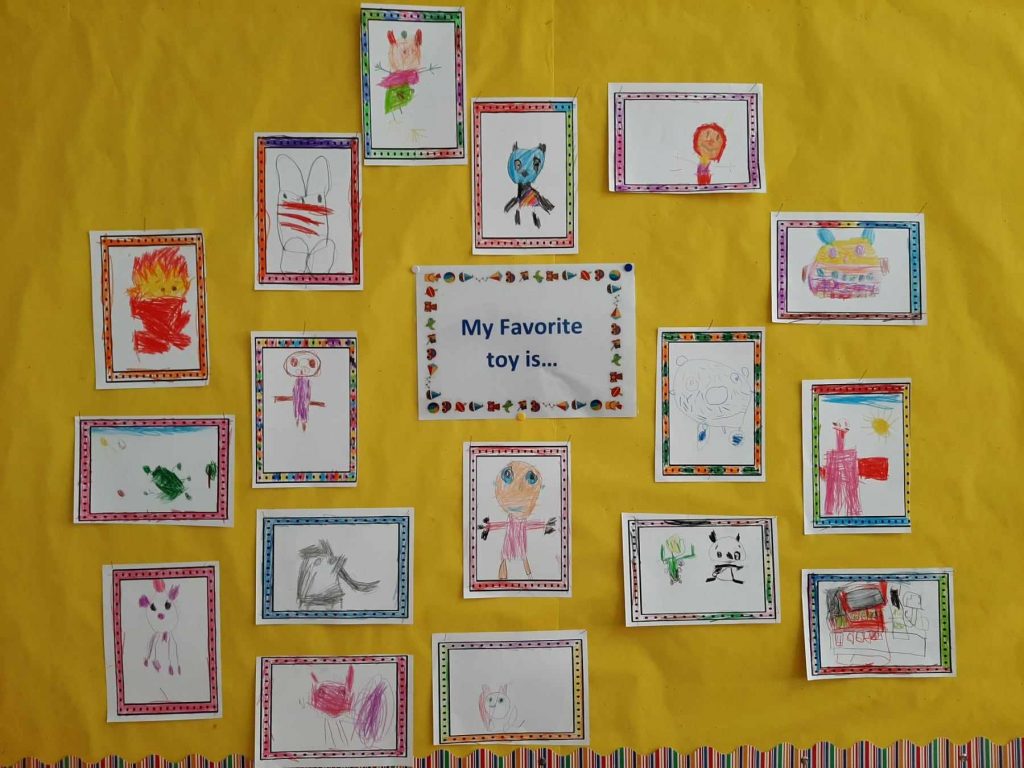
My Favourite toy, an activity with maximum active participation
Educator Maria Constantinou Skordou, together with her 24 students and with the help of 24 parents, carried out the activity entitled “My Favourite Toy” as part of the repilot phase of the pilot My Ideal School. The School I Would Like. The inspiration for this activity was an incident that happened one day at school when a student brought a toy that her grandfather had gifted her, while normally children do not bring toys from home, because they can break, get lost, etc. The other children protested and said that she should not have brought it, so it was decided that they would all bring their favourite toy the next day. Additionally, the activities implemented by the educators in Italy, who first implemented this pilot in their context, were a source of inspiration as they were so rich and varied. The inclusion and active participation of children with migrant background was certainly successful in Italy’s activities so Mrs. Constantinou tried to do the same in her own activities. Still, the learning objectives of the “My Favourite Toy” activity were for all the children in the class to have active participation in the activities, to cooperate with their classmates, to make dialogues with their classmates, to name their toy in English and to gain a sense of empathy.
After the girl brought the toy to class, a notice was sent to parents to bring the children’s favourite toy to school. So, the next day all the children brought their favourite toy. During the lesson time, the children took the role of the presenter. They had to present their “Favourite Toy” to the rest of the class. In presenting their toy they had to mention what toy it is, who gave it to them, what country it is from, if it has a name and what material it is made of. The children here had to report back with complete sentences about the above items.
Then the other children did their own interviews. They took on the role of a journalist and asked for further information about the toys they were curious about and wanted to learn more about. In a subsequent lesson, it was decided by the children that the toys should be tidied up so that they would look nice on the shelves of the Toy Shop they were creating. Thus, they grouped them according to criteria set by the children each time. For example, grouping by material, whether it is hard or soft, by colour and category of toys, whether it is a doll, car etc. The grouping was done in English, so they had to say, “My Favourite Toy is….” and the children had to name the toy in English. The children then worked on the visual part, where they virtually captured their toy and decorated a beautiful class sign titled “My Favourite Toy is….”. Finally, through emotional empowerment, they exchanged toys with various friends and played together, making dialogues, and of course, caring for and watching each other’s toys (empathy).
The fact is, the children were excited to have the opportunity to bring their toys to class and talk about them, and they loved playing the role of the journalist as well as being asked questions. They didn’t want to stop the dialogue. The children became emotionally aware of their friends’ toys, so they could be aware of them as they played. It was observed that children who were usually shyer and more hesitant talked eagerly in all the activities and were all happy and looking forward to what came next. It is noteworthy to mention that the foreign language children with very little vocabulary, tried harder to participate and engage in dialogues. The use of foreign language helped all the children a lot.
In conclusion, the children had the maximum active participation they could possibly have. Even hesitant and foreign-language children were eager and looking forward to participating in all the activities. The children were constantly happy and energetic and many of them enriched their vocabulary. All in all, the children gained empathy through the activities and in general, everyone had a very nice and constructive time, both the children and the educator.
Share on Facebook Share on Twitter Share on Pinterest